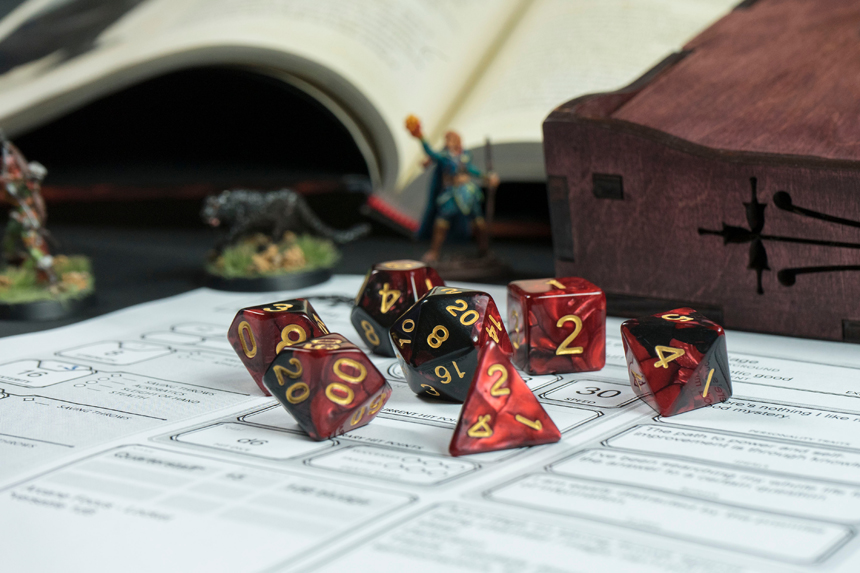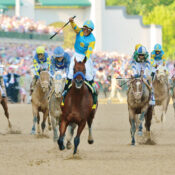No one knows when the first game was invented, but you can easily point to evolutionary leaps in the idea of gaming. Whether it’s the strategy of chess, the capitalism of Monopoly, or the electronic leap forward of Pong, games have always aimed for the next frontier. Fifty years ago, a game arrived that was centered not on a board, but almost entirely in the imagination. With some rulebooks, pencil, paper, and six oddly shaped dice, entire worlds opened. That’s the story of Dungeons & Dragons.
1. 1974: Welcome to the World
Dungeons & Dragons was created by Gary Gygax and Dave Arneson as an outgrowth of miniature wargaming. Instead of controlling armies in historical settings, players in this role-playing game (RPG) would control a single character that they would create in a fantasy landscape filled with mythical creatures and monsters. One member of the gaming group would function as Dungeon Master, essentially a storyteller/judge/referee who would execute the set-up and storytelling and then officiate the action; the other players would act out the decisions and intraparty dynamics of the characters that they would create before playing. The mechanics of the game would rely on dice of different types for functions (rolling a d20, or twenty-sided die, in combat, for example) and elaborate rules that would govern combat, the use of magic, and more. Players could use miniatures or create incredibly detailed maps or terrain, but the action could also simply be in the collective imagination of the group.
The creators initially had a hard time finding a company that would publish their original concept, which included three rule books in a boxed set. Gygax decided to co-found a new company with his childhood friend, Don Kaye, and publish the game themselves. They named the company Tactical Studies Rules, more commonly known as TSR. After modest sales of 1,000 units in the first year, the game tripled sales in the second. After that, it grew with increasing speed.
2. 1976: Joining with GenCon
In 1968, Gygax had founded the Lake Geneva Wargames Convention; the first year of the popular show ran in Lake Geneva, Wisconsin and continued in various Wisconsin cities as an annual event, spreading the word about tabletop gaming. In 1976, TSR officially acquired the conference, which was already popularly known as GenCon. As the popularity of D&D and other games grew, so did the show. The show has onlygotten bigger over the years, becoming the largest convention of its type in North America. Through the various acquisitions of TSR by other companies (more on that later), GenCon moved as well until it was sold to Peter Adkison. GenCon has been held in Indianapolis since 2003, drawing tens of thousands to the Circle City ever year.
3. 1977: More Versions Means More Players
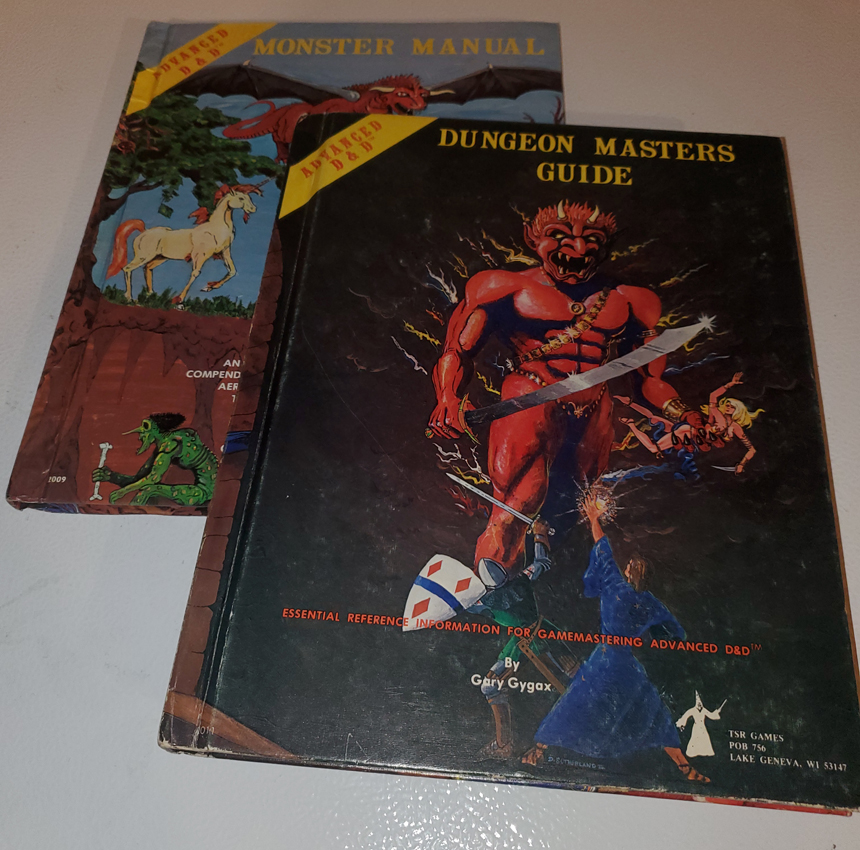
With some of the original rules being fairly complex, and therefore harder to grasp for either younger players or novices, TSR decided to launch two streams of products in 1977: a basic path represented by the Dungeons & Dragons Basic Set, a boxed set of streamlined rules that was aimed at younger players via toy departments; and Advanced Dungeons & Dragons, a new series of rules for experienced players. The other notion was that you could start with Basic and “graduate” to Advanced. The approach opened the way for thousands, then millions, of new players.
4. 1983: D&D on TV
The first episode of the Dungeons & Dragons animated series (Uploaded to YouTube by Adorable Little Puppy)
The post-Star Wars created a big boom in science fiction and fantasy at all levels, and the sword and sorcery subgenre that D&D was firmly rooted in saw a proliferation of novels and films, which drew in new audiences. On television, CBS took two swings at the audience, one official and one unofficial. The unofficial attempt was the live-action Wizards and Warriors, which had a lighter, swashbuckling tone as it depicted two warring (one good, one evil) kingdoms. Despite a terrific performance by Duncan Regehr as villain Dirk Blackpool, the show was doomed by the Saturday night deathslot that killed many shows aimed at a teen audience (who won’t watch if they’re out doing other stuff. Like playing D&D).
However, the official Dungeons & Dragons animated series on CBS Saturday mornings turned out to be a hit, running for three seasons before being cancelled. It introduced a variety of the game’s character types, monsters, and spells to young viewers. An LJN toy line featured several characters and monsters seen on the show, but not the teen leads. The series has maintained a strong fandom ever since. The show left so much of an impression that Renault made a Brazilian car commercial featuring live-action versions of the characters in 2019. In 2022, Hasbro made a line of action figures based on the show. The animated cast had a live-action cameo in 2023’s Dungeons & Dragons: Honor Among Thieves.
5. 1984: Dragonlance Expands the World
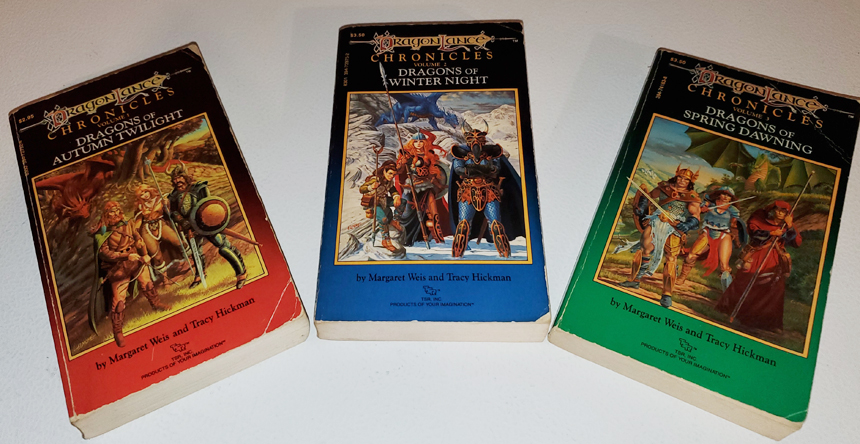
Proving that there were new worlds to conquer, TSR launched the expansive Dragonlance universe in 1984. Created by the husband and wife duo of Tracy and Laura Hickman, the Dragonlance Saga was set in the world of Krynn, one that contained new creatures and races alongside some familiar concepts. TSR published a module (a playable adventure) set in Krynn, Dragons of Despair. They also released the first of a series of novels by Margaret Weis and Tracy Hickman: Dragons of Autumn Twilight. The Dragonlance books took on a life of their own past the gaming tie-in; over 190 novels have been released by various authors. The 16 novels written by Weis and Hickman (including one released just last year) have sold in excess of 22 million copies.
6. 1985: 60 Minutes Rolls a 1
In game terms, rolling a 1 on your d20 means “critical failure.” Esteemed TV news magazine 60 Minutes did just that in 1985. As an undercurrent of the “Satanic Panic” and sensationalized cases like the disappearance of James Dallas Egbert III, some cultural forces tried to lay blame for everything from suicide to Satanism at the feet of the game. This 1985 segment goes all in on “D&D is bad” with an uncharacteristically one-sided Ed Bradley reporting some pieces as fact rather than conjecture. Gary Gygax appeared on the segment and did a solid job of defending his work, citing the futility of things like warning labels and the tendency of people to find scapegoats for parental or societal failures. One of the key opponents was psychiatrist Thomas Radecki, a founder of the National Coalition on Television Violence and a board member of the PMRC (Parents Music Resource Center); he would later be convicted and sentenced to prison for exchanging drugs for sex through his “Doctors and Lawyers for a Drug-Free Youth” program.
7. 1987: Nobody Forgets Drizzt
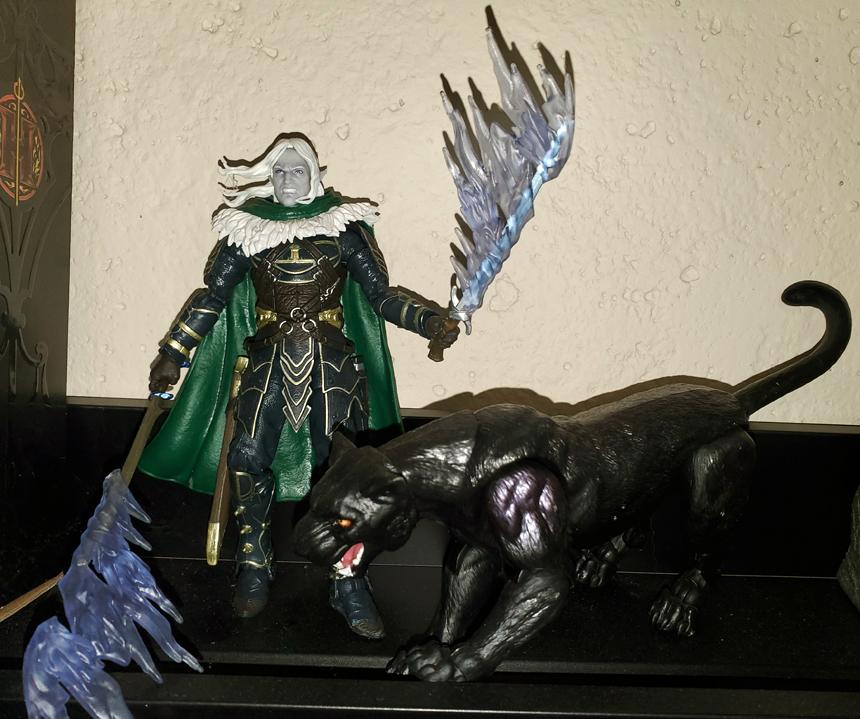
With Dragonlance a firm success, D&D opened the world further with the Forgotten Realms, a new collection of settings in which Dungeon Masters could set their adventures (such as Waterdeep, Icewind Dale, and Neverwinter). Designed by Ed Greenwood, Realms would prove massively popular. It became the foundation for a number of new game locations and launched a pair of properties that are monumental on their own: the Baldur’s Gate video game series, and the character of Drizzt Do’Urden. For Gate, 2023’s Baldur’s Gate III received enthusiastic reviews upon release and sold 2.5 million copies in its initial rollout.
As for Drizzt, the character first appeared in R.A. Salvatore’s 1998 Forgotten Realms novel, The Crystal Shard. A Drow, or Dark Elf, Drizzt runs counter to the negative perception of his fellow Drow and becomes a heroic ranger, battling alongside other heroes like the dwarf Bruenor Battlehammer and the barbarian Wulfgar. Drizzt has been featured in 39 books by Salvatore; every novel in the series has made The New York Times Bestseller List, with the most recent arriving in August of 2023.
8. 1997-1999: The Age of Acquisition
D&D may take place in a variety of magical lands, but this is America. And America is definitely known as a realm where successful businesses are often purchased by other successful businesses. In 1997, Wizards of the Coast, makers of the wildly popular Magic: The Gathering collectible card game, bought TSR. Just two years later, toy giant Hasbro (which also owns Kenner, Parker Brothers, and Milton-Bradley) bought WOTC and, therefore, D&D. Hasbro, which either owns or holds the license for toys like G.I. Joe, Transformers, Star Wars, and the Marvel Universe, has continued to produce D&D games, books, and paraphernalia while also committing to related action figures and other toys. Hasbro’s reach made D&D boxed sets and rulebooks a consistent presence in stores like Walmart and Target, whereas that distribution had only been sporadic in the past, with most sales moving through bookstores and gaming specialty shops.
9. 2000: First-Time Film
Trailer for Dungeons & Dragons: Honor Among Thieves (Uploaded to YouTube by Paramount Pictures)
2000 saw the release of Dungeons & Dragons, the first feature film based on the game. Widely considered a disappointment, the movie received a critical drubbing and failed to make back its budget. Nevertheless, there were two sequels: one made-for-TV movie, and a direct-to-DVD offering. Despite the first movie’s failure, seemingly everyone remotely associated with the game wanted to see a successful film made.
That had to wait until 2023’s Dungeons & Dragons: Honor Among Thieves. The film was a critical success, with much of the praise focused on Chris Pine’s performance, and was well-liked by fans. At the box office, it slightly underperformed against a huge budget. However, talk continues of another film entry, while Paramount+ has greenlit a spin-off series for the streaming service.
10. 2014-2017: Fifth Edition and Beyond
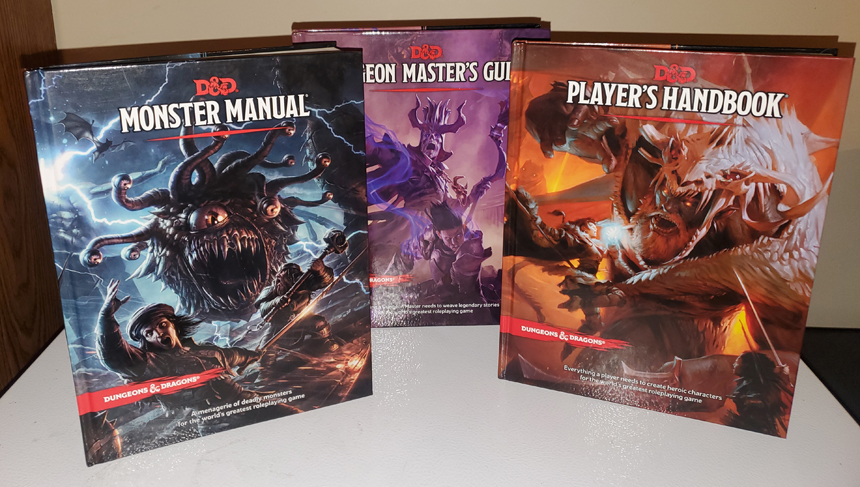
Updates to the overall game have been a somewhat regular occurrence, with new editions released every few years. The most recent version, the fifth edition, launched in 2014 with updated versions of the Starter Set, Player’s Handbook, Monster Manual, and Dungeon Master’s Guide. The Player’s Handbook was the top-selling book on Amazon on the day of its release, and was #1 on Publisher’s Weekly’s Hardcover Nonfiction chart for September 1, 2014. The updated rules have been broadly embraced for their balance of rules and storytelling.
Another innovation came with the 2017 introduction of D&D Beyond, a companion website with online versions of the rulebooks, printable character sheets, and much more. Originally launched as a subsidiary of the Twitch streaming service, it was purchased by Fandom, Inc. in 2018 before being bought by Hasbro in 2022. While some have complained that the digital versions of all of the rulebooks cost just as much as the physical books, many players find resources like the character sheets and automatic dice rollers to be extremely helpful.
2024: +1 Bonus
With this being D&D’s 50th anniversary year, you’d be correct to think that another update may be in the offing. Under the internal name of One D&D, updates to the fifth edition rules have been playtested for some time with the assumption that new rules would be released in the anniversary year (which also happens to be ten years out from the 2014 release of the fifth edition).
If the new rules are as yet uncertain, the fact remains that the game is more popular than ever. As of 2021, an estimated 50 million people play D&D, with 45 percent of players being 30 or older. Sales of the game have topped over $1 billion, and new players continue to be introduced to the game through pop culture avenues like the show Stranger Things or the evangelism of huge fans like actor Joe Manganiello or Rage Against the Machine guitarist Tom Morello. After fifty years, it looks the future of the game is much more certain than a random roll of the dice.
Become a Saturday Evening Post member and enjoy unlimited access. Subscribe now
